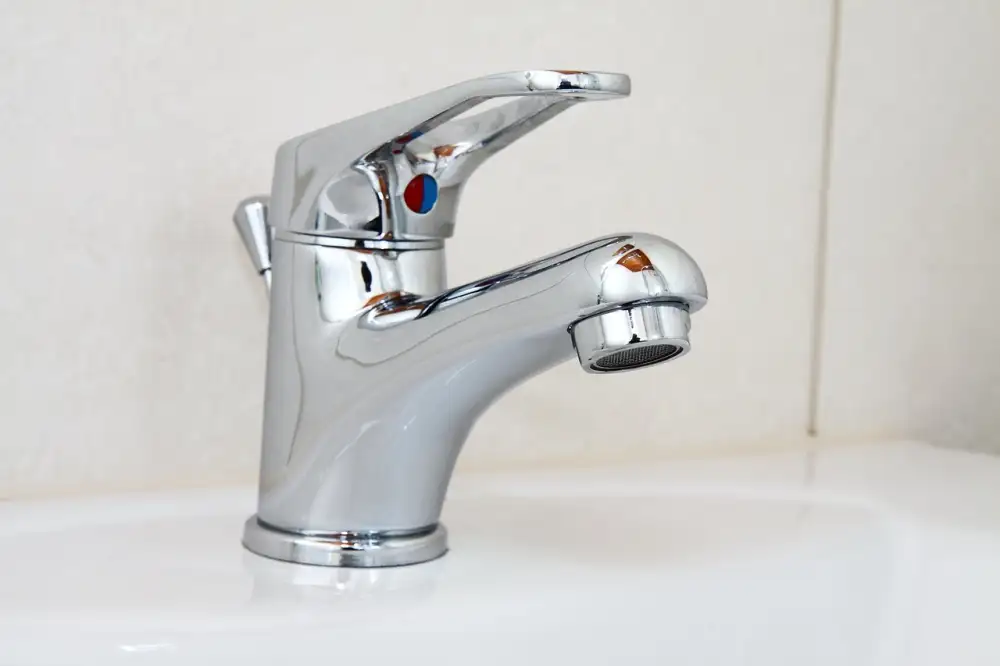Shine and Protect: Master the Art of Cleaning Stainless Steel at Home

- Gather the necessary cleaning supplies
- Preparing the stainless steel surface for cleaning
- Cleaning stainless steel using mild soap and water
- Removing stubborn stains with vinegar or baking soda
- Polishing and restoring the shine of stainless steel
- Preventing future stains and maintaining the cleanliness of stainless steel
Stainless steel is a popular choice for kitchen appliances, countertops, and fixtures due to its sleek and modern appearance. However, it requires regular cleaning to maintain its luster and prevent damage. Cleaning stainless steel not only enhances its aesthetic appeal but also ensures its longevity.
Stainless steel surfaces can easily accumulate dirt, fingerprints, grease, and stains from everyday use. Neglecting proper cleaning can lead to corrosion, discoloration, and even permanent damage. Regular maintenance is essential to preserve the beauty and functionality of stainless steel in your home.
Cleaning stainless steel is not as daunting as it may seem. With the right techniques and supplies, you can easily restore its shine and protect it from future stains. In this article, we will guide you through the art of cleaning stainless steel at home, ensuring that your surfaces remain spotless and gleaming for years to come.
Gather the necessary cleaning supplies
Before you begin cleaning your stainless steel surfaces, it's essential to gather all the necessary cleaning supplies. Having the right tools at hand will make the process more efficient and effective. Here are some items you'll need:
1. Microfiber cloth: This soft and non-abrasive cloth is perfect for wiping down stainless steel without leaving scratches or streaks.
2. Mild dish soap: Look for a gentle dish soap that doesn't contain harsh chemicals or abrasives. This will help to preserve the integrity of the stainless steel surface.
3. Water: Clean, warm water is essential for rinsing off any soap residue after cleaning.
4. White vinegar: Vinegar is a natural cleaner that can help remove stubborn stains and restore shine to stainless steel surfaces.
5. Baking soda: Another natural cleaning agent, baking soda can be used as a gentle abrasive to tackle tougher stains on stainless steel.
6. Soft-bristle brush or sponge: For more stubborn stains, you may need a soft-bristle brush or sponge to scrub gently without scratching the surface.
By gathering these supplies beforehand, you'll be well-equipped to tackle any dirt or stains on your stainless steel surfaces effectively and safely.
Preparing the stainless steel surface for cleaning
Before diving into the process of cleaning stainless steel, it is crucial to prepare the surface properly. This step ensures that the cleaning process is effective and prevents any damage to the stainless steel.
Firstly, remove any loose dirt or debris from the surface using a soft cloth or brush. This will prevent scratching during the cleaning process. Be gentle yet thorough in this step.
Next, dampen a clean cloth with warm water and wipe down the entire surface of the stainless steel. This helps to remove any surface grime or dust particles that may have accumulated.
For tougher stains or grease marks, you can add a few drops of mild dish soap to warm water and use this solution to wipe down the surface again. Ensure that you rinse off any soap residue thoroughly with clean water afterward.
It is important to note that abrasive cleaners or scrub brushes should be avoided as they can cause scratches on the stainless steel surface. Additionally, harsh chemicals such as bleach or ammonia should never be used as they can damage the protective layer of stainless steel.
By taking these preparatory steps, you are ensuring that your stainless steel is ready for a thorough and effective cleaning process, leaving it looking shiny and spotless once again.
Cleaning stainless steel using mild soap and water
Cleaning stainless steel using mild soap and water is a simple yet effective method to remove dirt and grime from the surface. Start by filling a bucket or sink with warm water and adding a few drops of mild dish soap. Use a soft cloth or sponge to soak in the soapy water and gently scrub the stainless steel surface in circular motions. Pay attention to any areas with stubborn stains or grease buildup, applying slightly more pressure if needed. Rinse the cloth or sponge frequently to avoid spreading dirt around. After thoroughly cleaning the entire surface, rinse it with clean water and wipe dry with a soft, lint-free cloth to prevent water spots. This method is suitable for regular maintenance cleaning and can be done as often as needed to keep your stainless steel looking shiny and spotless.
Removing stubborn stains with vinegar or baking soda
Removing stubborn stains with vinegar or baking soda is an effective and natural way to restore the beauty of your stainless steel surfaces. Vinegar, with its acidic properties, can break down tough stains and grime. Simply mix equal parts of vinegar and water in a spray bottle and apply it to the stained area. Let it sit for a few minutes before scrubbing gently with a soft cloth or sponge. Rinse thoroughly and dry with a clean cloth.
Baking soda, on the other hand, acts as a gentle abrasive that can remove stubborn stains without scratching the surface. Create a paste by mixing baking soda with water until it forms a thick consistency. Apply the paste to the stain and let it sit for about 15 minutes. Then, scrub gently using a soft cloth or sponge. Rinse thoroughly and dry with a clean cloth.
Both vinegar and baking soda are safe to use on stainless steel surfaces, but always test them in an inconspicuous area first to ensure they do not cause any damage or discoloration.
Remember to avoid using harsh chemicals or abrasive cleaners on stainless steel as they can cause scratches or damage the protective layer of the surface. Stick to natural cleaning methods like vinegar and baking soda for best results in removing stubborn stains from your stainless steel appliances and fixtures.
Polishing and restoring the shine of stainless steel
Polishing and restoring the shine of stainless steel is an essential step in maintaining its beauty and longevity. After cleaning, it's important to give your stainless steel a final polish to remove any remaining streaks or dullness.
To restore the shine, you can use a commercial stainless steel cleaner or make your own natural polish at home. One effective homemade solution is a mixture of equal parts vinegar and water. Simply dampen a soft cloth with the solution and gently rub it onto the stainless steel surface in circular motions.
Another natural option is using olive oil or mineral oil. Apply a small amount onto a clean cloth and buff the stainless steel in the direction of the grain. This will not only restore its shine but also provide a protective layer against future stains.
For stubborn stains or scratches, you can use specialized stainless steel cleaners that are specifically designed to remove tough marks without damaging the surface. Always follow the instructions provided by the manufacturer and test on a small, inconspicuous area before applying it to larger surfaces.
Remember to avoid using abrasive materials such as steel wool or harsh chemicals that can scratch or corrode the stainless steel surface. Stick to gentle cleaning methods and products to ensure its long-lasting beauty.
By regularly polishing your stainless steel appliances and surfaces, you will not only maintain their shine but also protect them from corrosion and rust. With proper care, your stainless steel will continue to dazzle for years to come.
Preventing future stains and maintaining the cleanliness of stainless steel
Preventing future stains and maintaining the cleanliness of stainless steel is essential to preserve its beauty and longevity. One effective way to prevent stains is by regularly wiping down the surface with a microfiber cloth or soft sponge after each use. This helps remove any food particles or liquids that may have splattered onto the stainless steel.
Avoid using abrasive cleaners, scrub brushes, or steel wool as they can scratch the surface of stainless steel. Instead, opt for gentle cleaning solutions specifically designed for stainless steel surfaces.
To maintain the cleanliness of stainless steel, it's important to avoid leaving wet or damp items on its surface for extended periods. Water spots and stains can occur if water is allowed to evaporate on the stainless steel. Always dry the surface thoroughly after cleaning or spills.
Additionally, be cautious when using acidic substances such as lemon juice or vinegar on stainless steel surfaces as they can cause discoloration or damage over time. If using these substances for cleaning purposes, dilute them with water and rinse thoroughly afterward.
Regular maintenance is key to keeping your stainless steel looking its best. By following these preventive measures and incorporating regular cleaning into your routine, you can ensure that your stainless steel remains spotless and gleaming for years to come.
Conclusion and Final Tips for Cleaning Stainless Steel Effectively
In conclusion, maintaining the cleanliness of stainless steel is crucial to preserve its shine and protect it from damage. By following the right cleaning techniques, you can ensure that your stainless steel surfaces remain pristine for years to come.
Here are some final tips for cleaning stainless steel effectively:
1. Avoid using abrasive cleaners or scrub brushes that can scratch the surface of stainless steel. Instead, opt for soft cloths or non-abrasive sponges.
2. Always wipe with the grain of the stainless steel to prevent streaks and maintain a uniform appearance.
3. Regularly clean your stainless steel surfaces to prevent buildup of dirt and grime, which can make cleaning more difficult in the long run.
4. If using commercial stainless steel cleaners, always read and follow the manufacturer's instructions carefully.
5. Test any new cleaning product on a small, inconspicuous area before applying it to the entire surface.
6. For stubborn stains or grease marks, consider using specialized stainless steel cleaners or polishes specifically designed for this purpose.
7. When drying your stainless steel surfaces after cleaning, use a clean microfiber cloth to avoid leaving behind lint or water spots.
By implementing these tips into your cleaning routine, you can keep your stainless steel looking as good as new while prolonging its lifespan. Remember, regular maintenance is key to preserving the beauty and functionality of this versatile material.
Published: 02. 03. 2024
Category: Home



